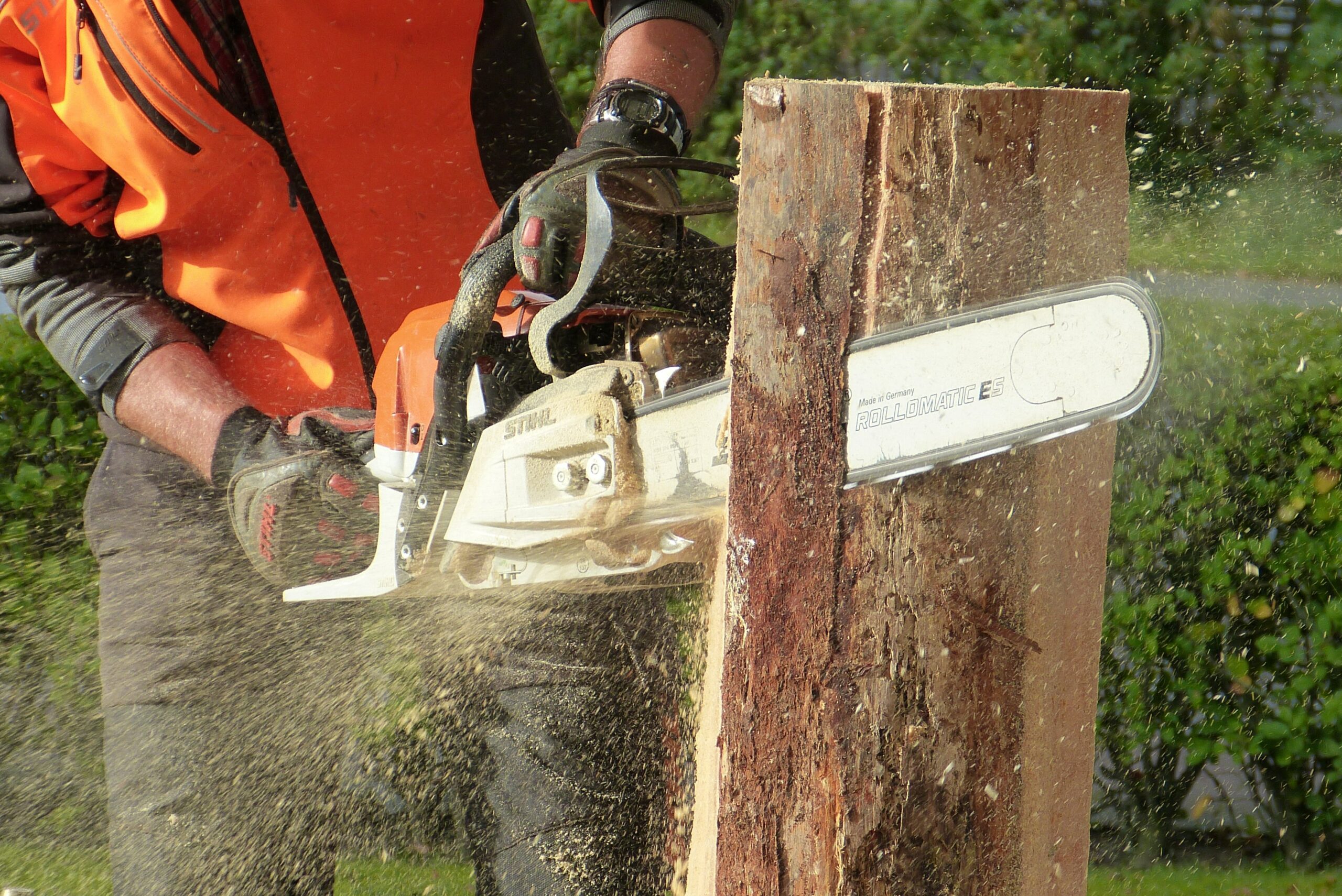Cut safety risks when using chainsaw

COLUMBIA, Mo. – “Not out of the woods yet” takes on new meaning during fall when chainsaw accidents increase.
Chainsaw accidents are painful, expensive and preventable, says University of Missouri Extension state forester Hank Stelzer. Plan before entering the woods to avoid accidents, he says. “If you fail to plan, you plan to fail” is his motto.
Legs, knees, wrists and hands are most at risk of injury when things go wrong in the woods, says Stelzer. The Occupational Safety and Health Administration reports more than 250 people die annually from chainsaw accidents in the U.S. Thousands more suffer serious injuries.
Most chainsaw fatalities involve kickback, which happens when the upper tip of the chainsaw guide bar touches an object. This contact may cause a lightning-fast reverse action of the guide bar toward the operator, which can result in severe injury or death.
Proper protective equipment saves lives and lessens the severity of injuries, especially for the casual operator who makes infrequent visits to the woods, says Stelzer.
Every chainsaw offers pros and cons. Select one that meets your needs. Stelzer recommends visiting a trained dealer with knowledgeable staff before buying a chainsaw. He offers tips in “Selecting and Maintaining a Chain Saw,” available for download at extension.missouri.edu/g1954.
Don’t go into the woods alone, Stelzer says. Let others know your location and estimated time of return. Carry a cellphone and check to see if you have a signal where you will be working.
Go to woods with proper safety equipment
Stelzer says properly fitted chainsaw leg chaps and headgear are wise investments. He prefers wraparound chaps that sell for about $100. Measure for chaps from the outseam, not the inseam, from the waist or belt to the top of the boot. Choose a full helmet with sound muffs and a guard or safety glasses. Helmets cost less than $60. Choose flexible gloves.
Take a first aid kit equipped with large trauma pads and bottles of water for eyewash.
Train first
Train employees and young people how to use chainsaws properly and dress safely. Talk about safety hazards and what to do in an emergency. Always work within your skill level.
Check the work area
Make sure you have sure footing. Check for other people in the area. Identify electrical lines in and near the work area. Look for branches that might dislodge and fall.
Before you pull the starter
Read the manual and follow manufacturer’s instructions. Make sure the chainsaw is in good working order. If you have any doubt about the chainsaw’s safety or your ability, put the chainsaw down. Never use a chainsaw that is damaged or has disengaged safety devices.
Never drop-start a chainsaw, says Stelzer. Drop-starting is holding the saw in one hand while pulling on the starter rope with the other. The operator has no control of the saw when drop-starting. “It’s a quick and easy way to end up in the urgent care clinic…or worse!” he says.
Stelzer recommends two ways to start the chainsaw.
1. Place the saw on the ground, place your foot inside the rear handle, then put one hand on the top handlebar and pull the starter rope with the other hand.
2. Holding the saw in one hand, place it between your legs at the knee, firmly squeeze the saw and pull the starter rope with the free hand.
“In both cases, make sure the safety brake is engaged,” Stelzer says.
Location, location, location
Keep feet secure and both hands on the handles. Plan where objects may fall and do not cut directly overhead.
Miss Clipping Out Stories to Save for Later?
Click the Purchase Story button below to order a print of this story. We will print it for you on matte photo paper to keep forever.

